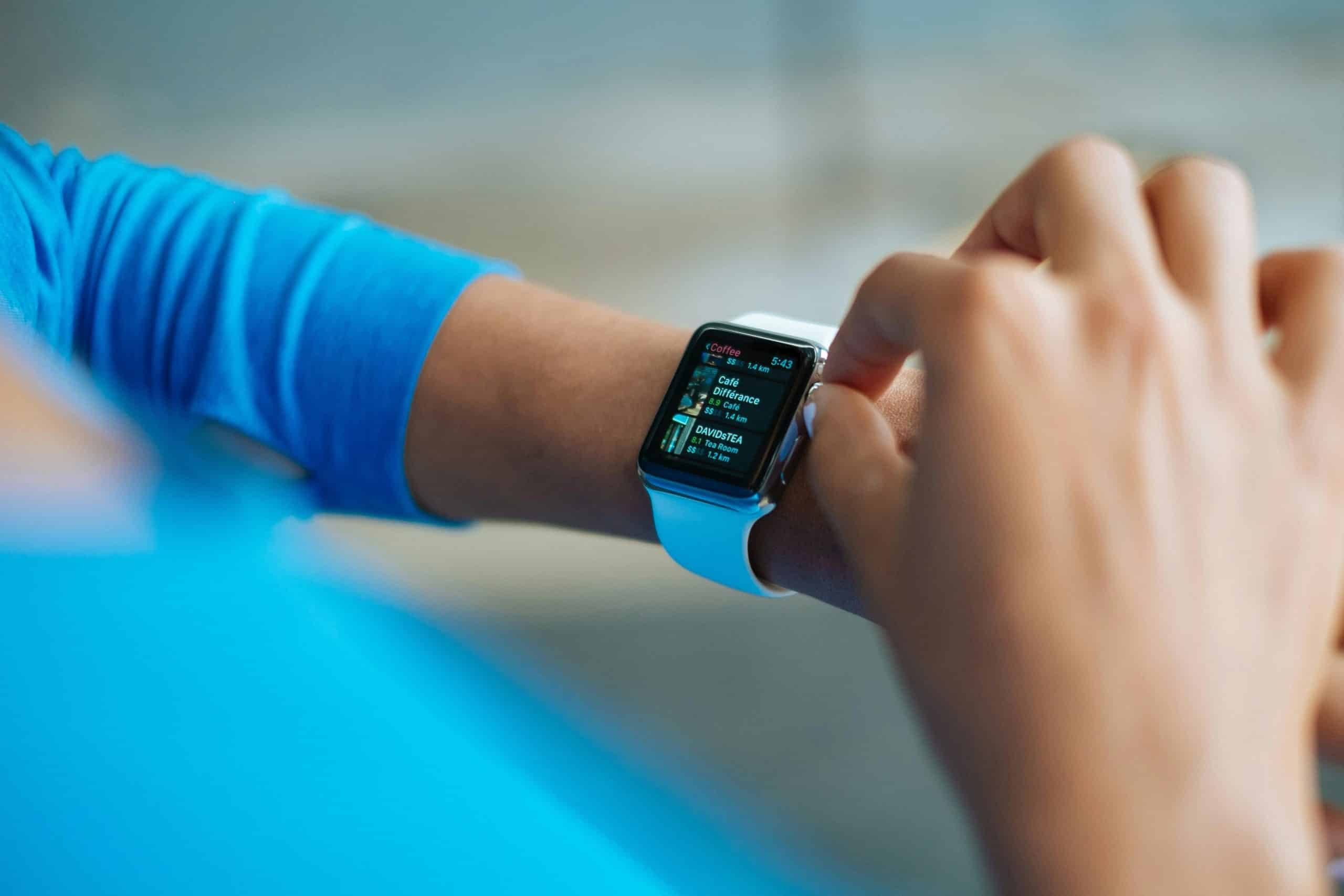How to Use Your Smartwatch for Tracking Cycling Workouts?

In today's technologically advanced world, smartwatches have become essential companions for fitness enthusiasts, particularly cyclists. With GPS tracking, heart rate monitoring, and power meter integration, smartwatches offer comprehensive data that can enhance your cycling workouts. Whether you own an Apple Watch, Garmin Forerunner, or ELEMNT Rival, understanding how to utilize your smartwatch effectively can make a significant difference in your training regimen. This guide will help you unlock the potential of your smartwatch to track your cycling workouts.
The Benefits of Using a Smartwatch for Cycling
Using a smartwatch for tracking your cycling workouts offers numerous advantages. These devices provide real-time data and post-ride analysis, which can be invaluable for improving performance and achieving fitness goals. With features like GPS, heart rate monitoring, and power meters, smartwatches enable you to gain a deeper insight into your cycling habits and physical condition.
A lire également : What Are the Best Practices for Cleaning and Maintaining Your Smartphone's Screen?
Your smartwatch can track various metrics, such as distance, speed, elevation, and calories burned. GPS tracking ensures that you never lose your way, while heart rate monitors help you maintain an optimal training intensity. Additionally, integrating power meters allows you to measure the exact power output during your rides, giving you a clear picture of your performance in different power zones.
Moreover, many smartwatches are compatible with fitness apps like Strava and the Peloton app, enabling you to sync and share your data effortlessly. This feature enhances your training by allowing you to compare your progress with other cyclists or even join virtual competitions.
A lire aussi : What Are the Methods to Reduce Lag During Online Gaming on Smartphones?
Enhancing Your Performance with GPS Tracking
One of the most valuable features of a smartwatch for cyclists is GPS tracking. This function allows you to track your routes precisely and analyze your performance over different terrains. It also provides navigation assistance, ensuring you stay on course during your rides.
When using GPS on your smartwatch, you can see your current speed, distance traveled, and elevation gain in real time. This data helps you understand how different factors, like wind or terrain, impact your performance. Moreover, reviewing your GPS data post-ride can help you identify areas for improvement, such as optimizing your pacing or choosing more efficient routes.
Garmin Forerunner and Apple Watch are renowned for their accurate GPS capabilities. These devices offer detailed mapping and turn-by-turn directions, making them ideal for exploring new cycling routes. Additionally, they allow you to set specific goals, such as distance or time, and track your progress throughout the ride.
Monitoring Your Heart Rate for Optimal Training
Heart rate monitoring is a crucial aspect of cycling training, as it helps you gauge your exertion level and maintain the right intensity. Smartwatches equipped with heart rate monitors provide continuous data during your rides, enabling you to stay within your target heart rate zones.
Your Apple Watch and Garmin Forerunner models are equipped with advanced heart rate sensors that deliver accurate readings. By monitoring your heart rate, you can ensure that you're training efficiently, avoiding overexertion or undertraining. For instance, if your heart rate is too high, it might indicate that you're pushing too hard, whereas a low heart rate might suggest that you're not challenging yourself enough.
You can use the data from your heart rate monitor to adjust your workouts accordingly. For example, if you're focusing on endurance, you might want to stay in a lower heart rate zone for a more extended period. Conversely, for interval training, you can alternate between high and low heart rate zones to improve your cardiovascular fitness.
Integrating Power Meters with Your Smartwatch
Power meters are invaluable tools for serious cyclists, as they provide precise measurements of power output. Integrating power meters with your smartwatch allows you to monitor your performance in real time and make data-driven adjustments to your training.
Power meters measure the force you apply to the pedals, giving you a clear picture of your effort. Combined with your smartwatch, this data helps you understand your power zones and optimize your training. For example, you can focus on improving your power output in specific zones, such as Zone 2 for endurance or Zone 5 for sprinting.
Garmin and Wahoo offer seamless integration with popular power meters, ensuring that you receive accurate data during your rides. When paired with your smartwatch, you can set power-based goals and track your progress over time. This approach enables you to make informed decisions about your workouts and achieve better results.
Using Smartwatch Apps for Enhanced Training
Fitness apps are essential for maximizing the benefits of your smartwatch. Apps like Strava and the Peloton app offer comprehensive tools for tracking, analyzing, and sharing your cycling data. Strava is particularly popular among cyclists, as it allows you to compare your performance with others, set challenges, and even create custom routes.
By syncing your smartwatch with these apps, you can access detailed analytics and insights into your training. For instance, Strava provides a breakdown of your ride, including segments, speed, elevation, and power output. This information is crucial for identifying strengths and weaknesses, allowing you to tailor your workouts accordingly.
The Peloton app also offers a range of cycling classes and training programs that can complement your outdoor rides. By integrating your smartwatch with the Peloton app, you can monitor your heart rate and power output during indoor sessions, ensuring that you stay on track with your training goals.
Optimizing Battery Life for Long Rides
One common concern among cyclists is the battery life of their smartwatches. Long rides can quickly drain the battery, especially when using GPS and heart rate monitoring features. However, with proper management, you can extend your smartwatch's battery life and ensure it lasts throughout your ride.
Firstly, consider turning off non-essential features, such as Wi-Fi or Bluetooth, when not in use. This can significantly reduce battery consumption. Additionally, many smartwatches offer power-saving modes that limit certain functions to conserve energy. For example, your Apple Watch and Garmin Forerunner have settings that allow you to disable notifications and background apps during your ride.
Another tip is to ensure that your smartwatch's firmware is up-to-date, as manufacturers often release updates that improve battery performance. Finally, try to fully charge your smartwatch before heading out and carry a portable charger for longer rides. This way, you can recharge your device during breaks and avoid running out of battery mid-ride.
Incorporating a smartwatch into your cycling routine can significantly enhance your training and performance. With features like GPS tracking, heart rate monitoring, and power meter integration, these devices provide valuable insights that help you optimize your workouts. By using fitness apps like Strava and the Peloton app, you can access detailed analytics and share your progress with a community of cyclists.
To make the most of your smartwatch, it's essential to understand how to utilize its features effectively. From tracking your routes with your watch's GPS to monitoring your heart rate and power output, these functions offer a comprehensive view of your cycling performance. Additionally, managing your smartwatch's battery life ensures that it lasts throughout your rides, allowing you to focus on your training without interruptions.
Ultimately, the best smartwatch for cycling is one that meets your specific needs and preferences. Whether you choose a Garmin Forerunner, Apple Watch, or ELEMNT Rival, each device offers unique features that can take your cycling workouts to the next level. By leveraging the power of technology, you can unlock your potential and achieve your fitness goals with confidence.
